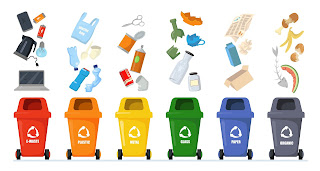The Lifecycle of Recycled Swag: Where Does It Go After You Donate It?
Each year, companies across the globe distribute tons of branded merchandise also known as swag ranging from tote bags and T-shirts to water bottles and lanyards. But what happens when that swag becomes outdated, unused, or overstocked? Rather than sending it to a landfill, many organizations are choosing to donate or recycle it. But where does that swag go after it leaves your hands?
Understanding the lifecycle of recycled swag not only helps businesses make more informed sustainability choices but also highlights the environmental benefits of recycling that come with responsible swag management. Let's follow the journey of donated swag and explore the meaningful impact it can make.
Step 1: Collection and Sorting
The first stage in the lifecycle begins with collection. Companies often partner with sustainability-focused organizations like SwagCycle to responsibly handle surplus branded items. These items are gathered in bulk from offices, warehouses, or event leftovers and are sorted based on condition, material, and type.
Reusable and undamaged swag (such as shirts, bags, and mugs) is separated from items that may need to be recycled or repurposed. Sorting is crucial because it determines the most sustainable path forward for each item.
Step 2: Donation to Charities and Communities
A large portion of usable swag gets a second life through donation programs. Many non-profit organizations, shelters, and schools happily accept branded items like clothing, water bottles, or backpacks. These items are distributed to people in need locally or globally where they serve a practical purpose.
For example:
T-shirts may go to disaster relief programs.
Bags and office supplies might be sent to under-resourced schools.
Reusable drinkware can support communities working to reduce single-use plastic.
This process not only prevents waste but also turns forgotten swag into tools for social good, promoting equity and sustainability.
Step 3: Upcycling and Creative Repurposing
Some swag items, especially those with outdated logos or event branding are transformed through upcycling. Instead of recycling them in traditional ways, creative designers or organizations repurpose them into new, valuable products.
Examples include:
Turning old T-shirts into tote bags or pillowcases.
Converting banners into laptop sleeves or wallets.
Using fabric from unused hats or apparel to create patchwork fashion.
This method preserves the original material while minimizing the need for new resources, showcasing one of the most innovative environmental benefits of recycling: creative waste reduction.
Step 4: Material Recycling
When swag items are no longer suitable for donation or upcycling, they move into the material recycling phase. This involves breaking down the product into raw materials that can be re-used in new manufacturing.
Plastic items (e.g., pens, keychains) are shredded, melted, and reused to make new plastic products.
Metal parts from water bottles or tech gadgets are separated and melted down for industrial reuse.
Textile waste from fabric-based swag is sorted by fiber type and color before being processed into insulation, stuffing, or industrial rags.
While this stage is more energy-intensive than donation or upcycling, it still greatly reduces the need for virgin materials and limits pollution demonstrating another critical environmental benefit of recycling.
Step 5: Circular Economy Reintegration
The final step in the life cycle is reintegration. Once recycled materials are processed, they re-enter the economy as components of new products. Some companies even opt to close the loop by creating new branded merchandise from recycled swag materials, reinforcing a circular business model.
By choosing eco-conscious vendors and sustainable production processes, brands can extend the lifecycle of their promotional items, reduce their carbon footprint, and actively contribute to a healthier planet.
Why This Lifecycle Matters
Understanding the lifecycle of recycled swag is important because it highlights the real, measurable environmental benefits of recycling, such as:
Reducing landfill waste: Every donated or recycled item diverts material away from overcrowded landfills.
Lowering greenhouse gas emissions: Recycling uses less energy than producing items from scratch, helping combat climate change.
Conserving natural resources: By reusing textiles, plastics, and metals, we minimize the extraction of raw materials.
Supporting community impact: Donated items meet real needs while promoting brand goodwill.
Final Thoughts
What seems like a forgotten box of old T-shirts or conference swag can become part of something bigger, a global effort to reduce waste, uplift communities, and protect the environment. When businesses commit to responsible recycling, they unlock the full potential of their branded merchandise and showcase leadership in sustainability.
So the next time you look at unused swag, remember: it’s not trash. It’s an opportunity. With the right recycling or donation strategy, that forgotten item can start a brand-new journey and make a lasting difference.



Comments
Post a Comment